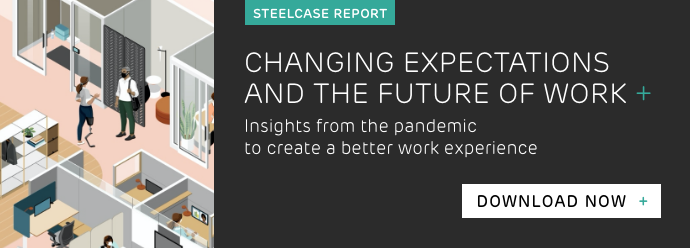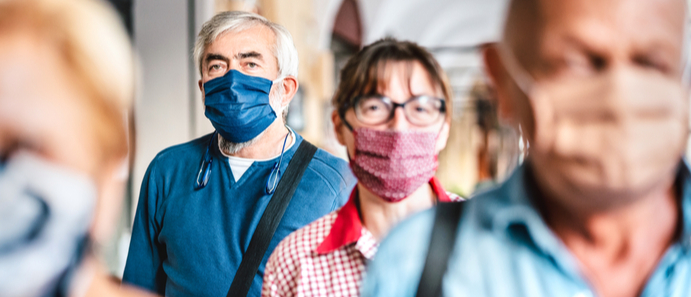 The end of lockdown may finally be in sight - and a new era of flexible working is about to commence. But while some firms are contemplating a future of remote and hybrid collaboration - others, like Goldman Sachs, are expecting pretty much all their people to come back to their offices full time. What do these companies need to do to maintain Post-Covid staff safety?
The end of lockdown may finally be in sight - and a new era of flexible working is about to commence. But while some firms are contemplating a future of remote and hybrid collaboration - others, like Goldman Sachs, are expecting pretty much all their people to come back to their offices full time. What do these companies need to do to maintain Post-Covid staff safety?
As David Solomon chief executive of Goldman Sachs has stated, the WFH culture is not something they want to pursue:
I do think for a business like ours, which is an innovative, collaborative apprenticeship culture, this is not ideal for us. It’s not a new normal. It’s an aberration that we’re going to correct as soon as possible”
For many, Solomon's words will mean going back to the daily commute and long hours of intensive office-based working (for which, of course, they will be greatly rewarded).
But what will Goldman Sachs' time line realistically look like? And how should they prepare their workplaces for a full return when it’s finally permitted?
Easing of lockdown
Officially, the stay at home order changed on 29th March, but the advice is still to work from home where we can. Still, many will want to remain at home until they have received their vaccination. That's going to affect many people's timetables for return:
“under the current vaccination plans, all adults should be offered a vaccination by 31 July 2021. This means that, as of 21 June 2021, there will be still a considerable number of the UK adult population who will not have been vaccinated at all and many more will not have had their second vaccination. It is likely that many younger employees in particular may not be vaccinated by 21 June 2021…
Social distancing to last into 2022
Experts are saying we'll need to keep social distancing for at least another year and maybe more. There is likely to be a continued need for masks; while frequent hand sanitisation and enhanced cleaning routines will continue to be the order of the day.
The question is how can we make these restrictions a seamless part of our routine, while not feeling daunting or unnatural. And a lot of that will come down to questions of planning and design
How can we can plan a return to a better workplace?
So, how can Goldman Sachs and other companies plan a better working experience for their people?
1. Space planning
The workplace will need to solve for an even more diverse set of needs than before, with a focus on safety, productivity, inspiration and flexibility.
Steelcase's Work Better research introduces four new design principles that should now sit at the heart of office design:
Me and We
The office needs to be a space for both group activities and solo work. These needs can be equally supported by creating neighbourhoods where both collaboration and focused work can ebb and flow. But these spaces will need to be open and spread out to allow for a safe 2-metre social distancing between employees. Some companies are swapping denser working spaces altogether for larger, more open areas where workers can space out more effectively.
Open and enclosed
People who did individual work in more dense, open spaces may want a more enclosed space to control both privacy and safety. While teams used to working in enclosed meeting rooms will prefer more open settings. Not only will these more open spaces feel safer and allow for social distancing, but they will give teams more space to expand and adapt the space to suit their activities. Biophilia and easy to position screens will help these open spaces feel more protected.
But Solomon would be wise to remember that everyone will have different views on what they need from these spaces. People who loved having their own home office because it made them feel free or safe, will desire a space back in the office that gives them those same feelings. On the other hand, those who found the home office to be lonely, restricting and suffocating, will want to feel more enmeshed with their colleagues with fewer barriers and spaces that inspire and energise them.
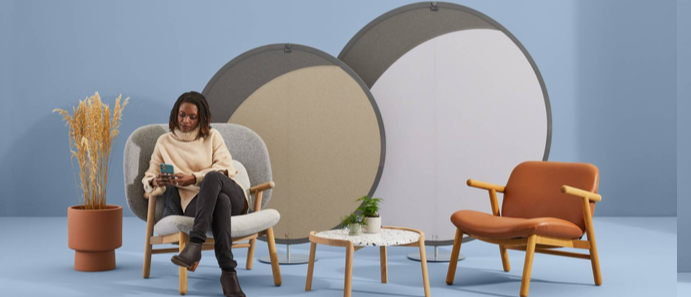
Fixed to fluid
The workplace will need to provide greater flexibility and mobility, so they can be changed as needed. For example, to increase or reduce social distancing.
Moveable furniture and tech and easy to position noise reducing screens will allow teams to distance organically but without compromising their ability to communicate and be productive.
At the same time, height-adjustable desks and freestanding screens are adding extra protection to workspaces by shielding face-to-face interactions between those seated directly across or nearby one another.
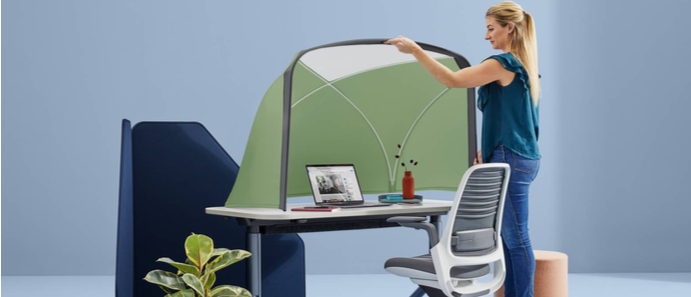
Braiding Digital + Physical
With international travel curtailed, there will be a need for solutions that allow cross-site teams to work together effectively. These include:
- Large screen video conferencing facilities that keep virtual participants visible on screen even when materials are being shared
- Untethering from table seatings so teams can position themselves better to include virtual participants
- Use of virtual whiteboards
2. Wayfinding
Signage for wayfinding in newly re-organised offices can help enforce one-way systems and reduce unnecessary mixing when required. Better circulation control can help reduce bottlenecks in worker movement and minimise passing contact between separate teams.
The use of digital signage can make these kind of controls much more flexible, allowing businesses to ramp up and relax movement restrictions on demand. Special attention should be paid to wording and branding of signage so messaging is effective while reflecting the values of the company.
3. Hygiene stations
If we’re going to make these a permanent part of the landscape, we should think about their aesthetics and where they need to be placed for maximum effectiveness. Do they need to be integrated or free standing? What is the optimal design to increase frequency and speed of use?
4. Owning better spaces
Things have changed for many people as they've worked from home in the last 12 months. Although we've missed out on some of the collaborative aspects of a busy workspace, we've found greater opportunity for deep thinking and concentrated work.
Some of the latest designs coming out of the US are pointing to new ways we can carve out more of this 'personal space' in shared offices, helping with both privacy and social distancing. For businesses like Goldman Sachs looking to get their people back to full time office work, these flexible and cost effective solutions might help them find more focus and psychological security back in a busy work space.
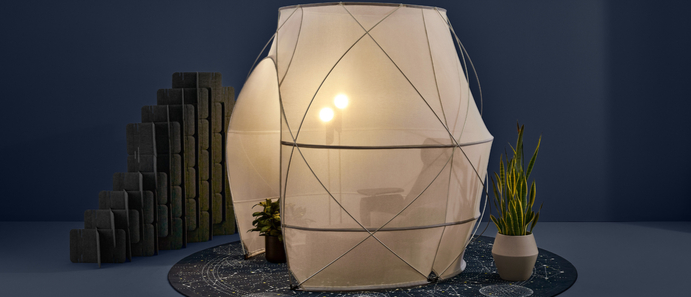
5. Cleaning and air scrubbing
Hygiene considerations will be paramount as businesses create safer working experiences for their people. Employers may want to increase the frequency of cleaning throughout the day. These regimes may include UVC disinfection and air purification strategies to give reassurance to workers that proactive measures are being taken. When it comes to soft furnishings - many businesses will want to consider how best to keep them clean while ensuring they remain smart and comfortable. Steelcase are suggesting using more antimicrobial fabrics as well as organic, wipeable finishes to meet these new cleaning requirements.
Going back to better
For those businesses like Goldman Sachs, planning for a full return to the office - it's an opportunity to create safer and more comfortable environments fit for the Post Covid world.
But accommodating the same amount of workers while reducing the density of occupation across the available space will certainly be a juggling act. Innovative design will be required to help them re-establish the flow for buzzing, collaborative teams while creating safer spaces that are a pleasure to inhabit.




